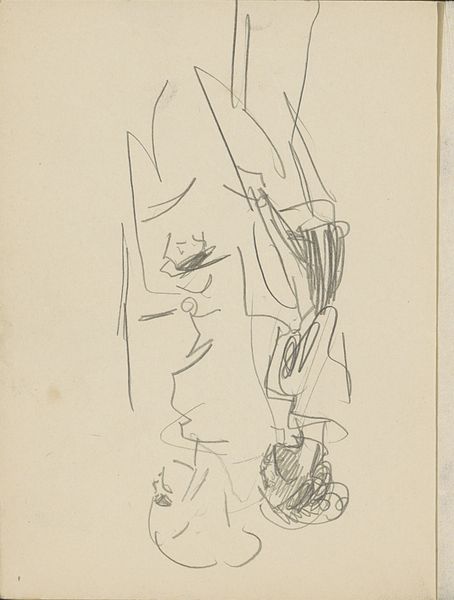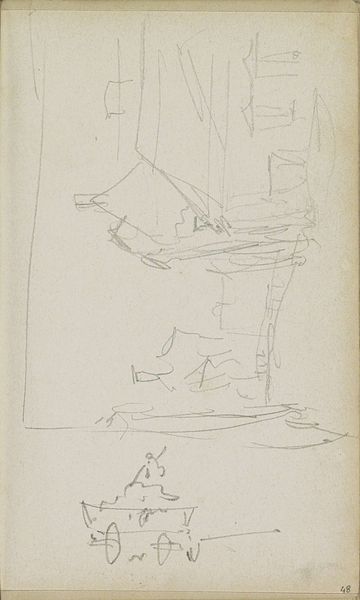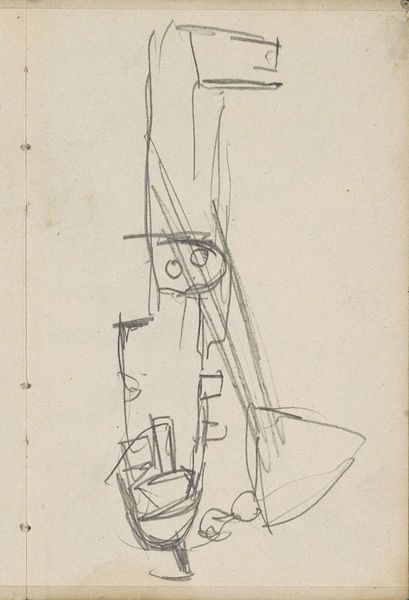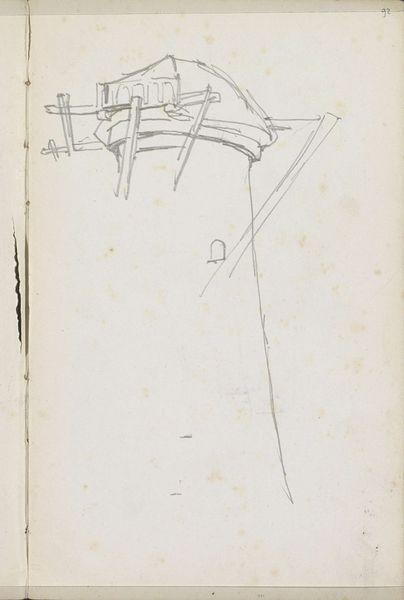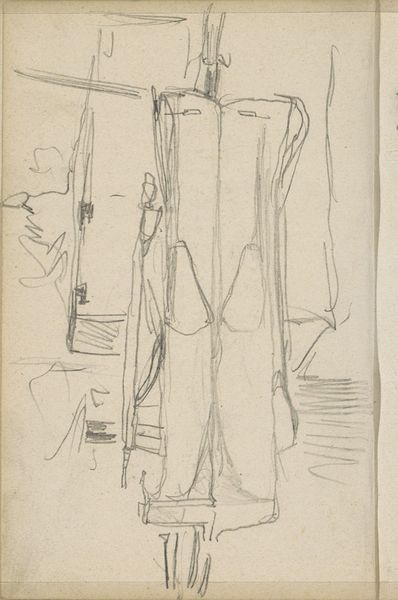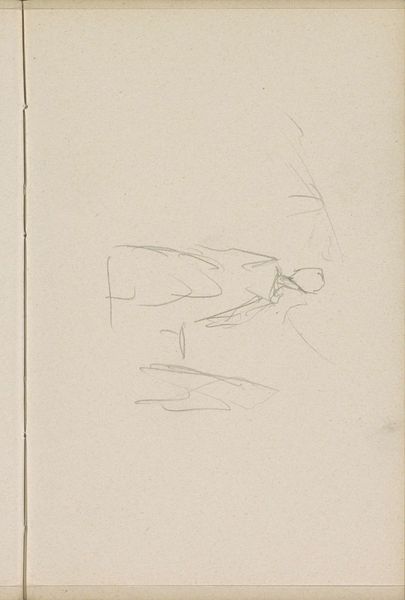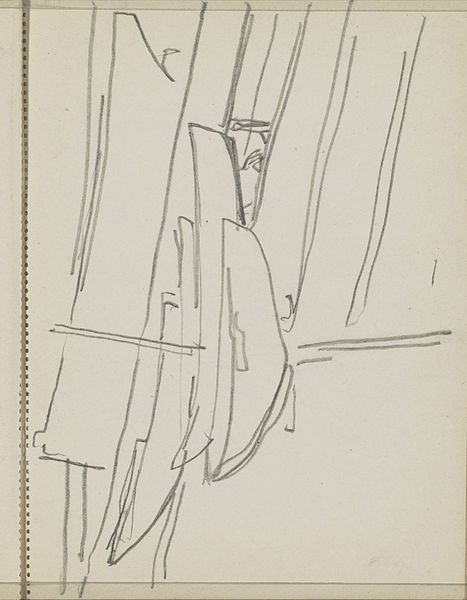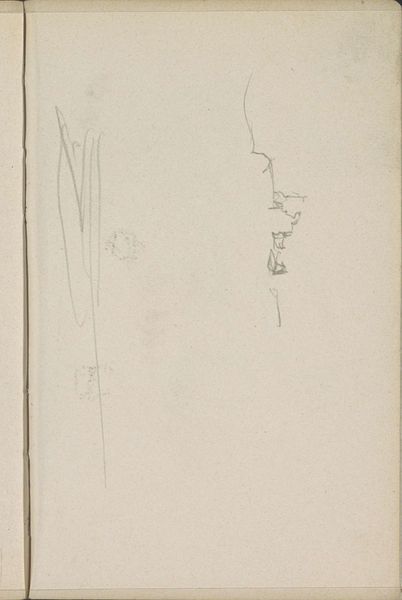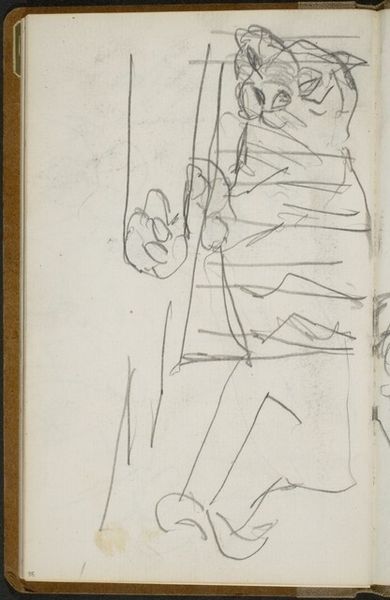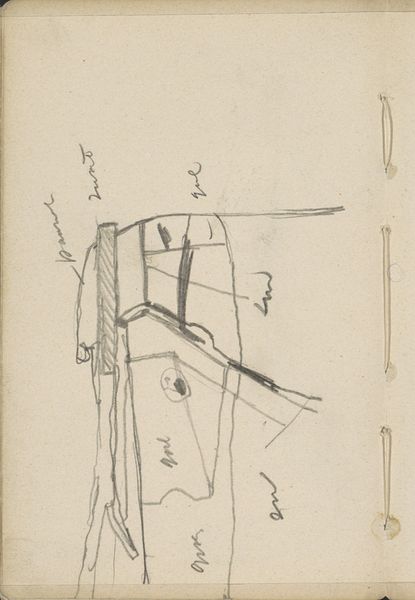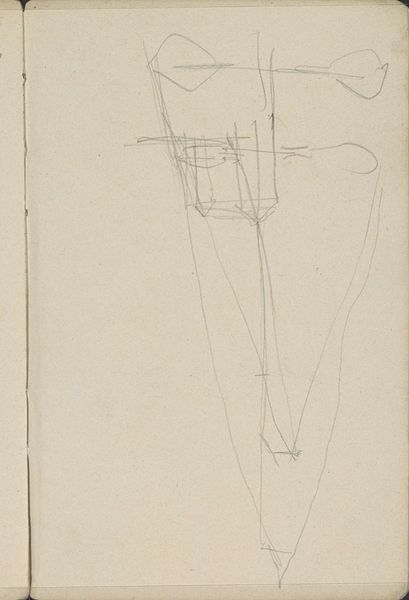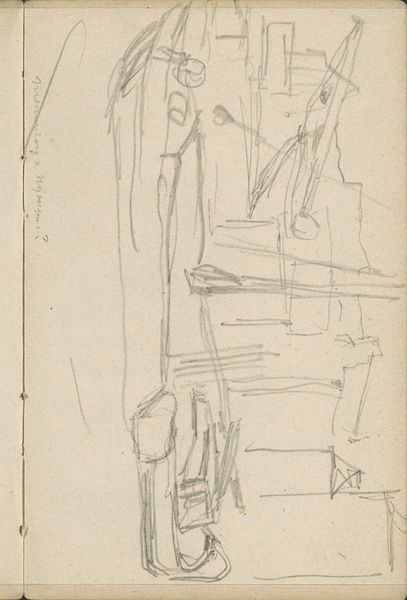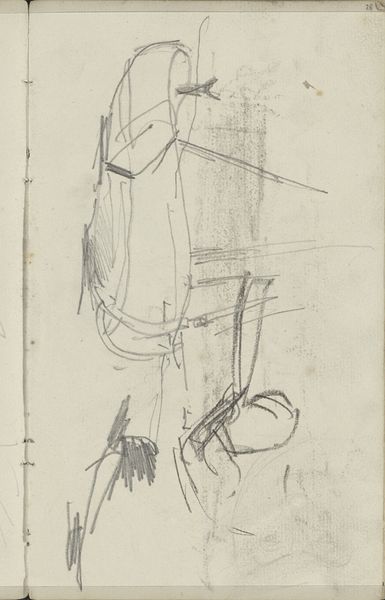
Copyright: Rijks Museum: Open Domain
Editor: Breitner's "Twee Boten," from around 1900-1901, is a pencil drawing on paper and it immediately strikes me as very spare and immediate, like a quick sketch capturing a fleeting moment. It feels like it emphasizes the essential lines of the boats. What do you see in this piece from your perspective? Curator: Well, seeing this drawing through a historical lens, I think it reflects the artist's interest in documenting modern urban life, which was characteristic of many Impressionists. While maybe not overtly political, Breitner’s focus on working vessels challenges the more romantic portrayals of leisure found in traditional landscape art, what statement do you think he's making by not doing so? Editor: It’s interesting to consider that. By focusing on the everyday, functional aspects of the boats, perhaps he’s trying to democratize art, reflecting a broader shift in artistic and social values where ordinary life gained greater recognition? Is that a possibility? Curator: Exactly. And how the city itself, especially a port city, becomes almost like a stage upon which we are spectators. Do you notice anything about how he has framed the boats? Editor: Now that you mention it, it feels like we're viewing a snippet of a larger scene. It lends the work this unfinished, informal mood. And that gives an authentic representation of city life in motion. Curator: Precisely, which blurs the line between high art and something casually observed or caught on the fly. It provokes questions about what is considered worthy of artistic representation and the social role of the artist, wouldn't you say? Editor: Absolutely. It's much more than a drawing of boats; it’s a cultural snapshot of a changing world. Thank you for your fascinating insight! Curator: And thank you, your observation was quite stimulating.
Comments
No comments
Be the first to comment and join the conversation on the ultimate creative platform.
